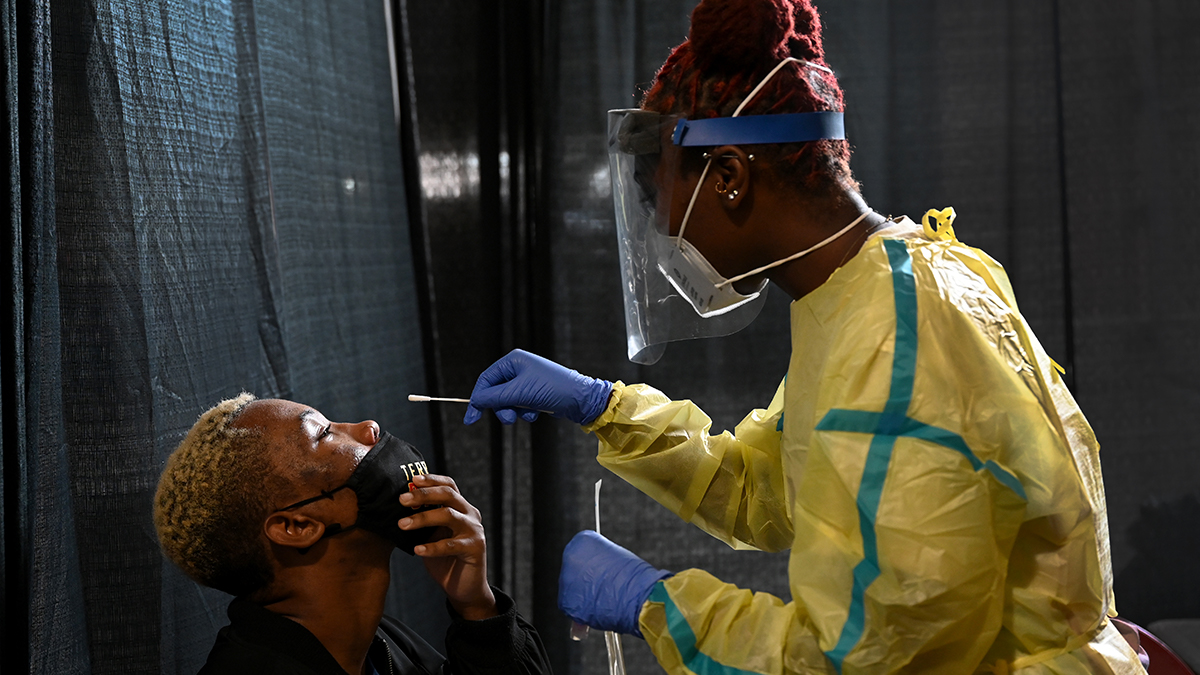The coronavirus data in Washington, D.C., Maryland and Virginia are starting to head in slightly different directions. And with numerous researchers warning that fall could bring a new surge of cases, small increases now could spell a more pressing crisis in the future.
Maryland continues to pull down its average number of daily coronavirus infections.
D.C. is stable, although it had its highest number of new cases in about two weeks reported on Thursday.
Virginia's numbers, however, are rising.
Outbreaks continue to be an issue everywhere, with more than 9,000 counted at long-term care facilities in Virginia and nearly 15,000 in Maryland facilities. With school getting back into session, including at colleges and universities, hand washing and mask wearing have become even more important.
Already, Virginia Tech's first football game of the season was postponed by two weeks after 22 coronavirus cases were found within North Carolina State's athletics department, NBC Sports Washington reported.
The region scores well for social distancing, according to a University of Maryland analysis. D.C. is ranked first in the country for the percentage of people staying home, 43%.
Maryland ranks seventh (27% staying home) and Virginia ranks 12th (26% staying home).
Meanwhile, Arlington County police will enforce social distancing in the nightlife area of Clarendon starting Friday, and violators will be issued fines of up to $100 after a weekend-long warning period.
We're making it easier for you to find stories that matter with our new newsletter — The 4Front. Sign up here and get news that is important for you to your inbox.
What the Data Shows
The seven-day average of new cases is rising in Virginia, up to 885 Thursday from 837 last week. There's some better news, though: Hospitalizations are down to 825 (compared to 893 last Thursday).
Average new cases are stable in D.C. and decreasing in Maryland to 548, down from 581 last Thursday.
D.C. added 72 new cases on Thursday, the most in about two weeks.
The map below shows the number of coronavirus cases diagnosed per 1,000 residents.
Coronavirus Cases in DC, Maryland and Virginia
COVID-19 cases by population in D.C. and by county in Maryland and Virginia
Source: DC, MD and VA Health Departments
Credit: Anisa Holmes / NBC Washington
Local Coronavirus Headlines
- D.C. Public Schools are back in session Monday, Aug. 31 and city officials have guidance on how to make it as smooth as possible. Read more.
- Arlington County police will enforce social distancing in the nightlife area of Clarendon starting Friday and violators will be issued fines of up to $100 after a weekend-long warning period. Read more.
- Washington, D.C., has updated the list of states for which the city has travel restrictions because of the coronavirus pandemic. Read more.
- Virginians on unemployment will get an extra $300 on top of what the state pays out. Read more.
- Special needs students are among the first groups who should get in-person instruction, Fairfax County school officials say. Read more.
- Montgomery County officials said in an update Wednesday that testing will resume at county sites using test kits from the state. Testing was suspended last week after the state health department ordered the county stop using saliva tests from a Rockville lab. Read more.
- The federal government has started sending new COVID-19 testing systems to nursing homes around the country in hopes that the rapid results provided by antigen tests will slow the spread of the virus. Long-term care facilities certainly welcome that assistance, but some have major concerns about those tests. Get the News4 I-Team report.
- Most people recently diagnosed with the coronavirus in D.C. had no known contact with someone who had the virus and did not attend events or travel, new data from the city says. Read more.
Reopening Tracker
- Private and parochial schools in Maryland can choose when to reopen after a back-and-forth between county health officials and the governor. Read more.
- Prince George's County is revising its phase two reopening executive order due to an uptick in coronavirus cases, according to the county executive's office.
- Virginia entered phase three reopening on July 1, loosening restrictions on restaurants, stores, gyms and pools. Northam said more restrictions could be implemented if cases continue to grow.
- Prince George's County entered full phase two on June 23, allowing the MGM Casino and gyms to reopen.
- D.C. entered phase two on June 22, allowing indoor dining, gyms, libraries and houses of worship to reopen with restrictions.
- Montgomery County entered phase two on June 19, reopening with restrictions gyms, houses of worship, indoor dining and retail.
- Maryland entered phase two of reopening on June 10, permitting indoor dining, outdoor pools and outside amusements to reopen.
How to Stay Safe
There are ways to lower your risk of catching coronavirus. Here are guidelines from the CDC:
- Wear a snug-fitting mask that covers your nose and mouth.
- Avoid being indoors with people who are not members of your household. The more people you are in contact with, the more likely you are to be exposed to COVID-19. If you are indoors with people you don’t live with, stay at least six feet apart and keep your mask on.
- Wash your hands often, especially after you have been in a public place.
Sophia Barnes, Andrea Swalec and Anisa Holmes contributed to this report



